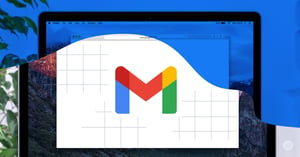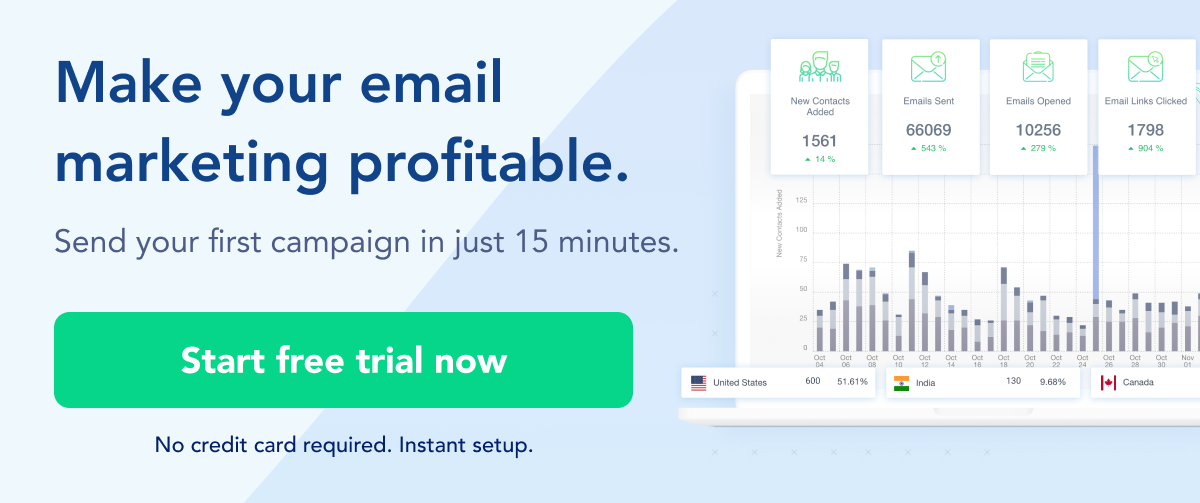
Gmail’s New Requirements for Email Delivery
Do you often find yourself hitting the 'send' button on bulk email campaigns, hoping to capture the attention of your audience?
If so, you're about to read something that could drastically enhance your email delivery success. As the digital world evolves, so do the measures to maintain its integrity such as Gmail introducing new requirements for email senders.
This move is not to make your life harder but to ensure a safer and more trustworthy email ecosystem for everyone involved. Let's dive into why these changes are crucial and how you can seamlessly adapt to them.
Table of Contents
Quick summary of new Gmail requirements
- Implement SPF and DKIM SPF and DKIM, establish email authentication protocols, authorize domain use in email messages and attribute proper credit to domain owners.
- Send from a domain with a DMARC policy of at least p=none DMARC builds upon SPF and DKIM, providing authorization for the visible 'From' header and offering insights into authentication practices.
- Send with an aligned From domain Requires a visible From domain aligning with either SPF or DKIM domain, promoting alignment based on the DMARC protocol.
- Valid forward and reverse DNS Enforces not only a PTR record for connecting IP addresses but also that the PTR record resolves to a hostname, preventing spoofing attempts.
- One-click unsubscribe Involves inserting headers signaling mail clients to support one-click unsubscribes, enhancing user experience.
- Low spam rate encourages domain owners to send wanted mail, promoting engagement and trust with Gmail users.
Why the new requirements?
Gmail introduced new email deliverability requirements to combat the increasing complexity and volume of threats such as spam, phishing, and malware. The changes, effective from February 2024, aim to keep user inboxes safer and more spam-free by enforcing stricter validation and authentication protocols for bulk senders.
These requirements were deemed necessary due to several factors:
- Email Security Despite Gmail's AI-powered defenses blocking a significant amount of unwanted emails, the evolving landscape of digital threats necessitated further action. The new requirements focus on ensuring that bulk senders securely authenticate their emails, making it harder for attackers to exploit vulnerabilities and send harmful messages.
- Improving User Experience By mandating easy un-subscription options and maintaining low spam rates, Gmail aims to enhance the overall user experience. These measures ensure that users receive only the emails they want, reducing clutter and the risk of malicious content.
- Industry Standardization The introduction of these requirements also encourages the adoption of best practices across the email marketing industry. By requiring bulk senders to authenticate their emails and adhere to standards such as SPF, DKIM, and DMARC, Gmail is promoting a more secure and standardized email ecosystem.
- Reducing Spam and Phishing The new rules specifically target reducing spam and phishing attacks by making it more difficult for malicious actors to send deceptive emails. By requiring senders to maintain a spam complaint rate under a specific threshold, Gmail ensures that the emails reaching users' inboxes are more likely to be legitimate and wanted.
What happens if you don’t meet the new requirements?
The most tangible consequence of not meeting these requirements is the potential impact on email deliverability.
When emails are not authenticated properly through protocols like SPF, DKIM, and DMARC, they are more likely to be flagged as potential threats. This is because these authentication methods serve as a verification process, ensuring that the email is sent from a legitimate source and has not been altered in transit. Without these verifications, Gmail's filtering algorithms may classify the emails as spam or phishing attempts, leading to them being blocked or sent to the spam folder, where they are unlikely to be seen by the intended recipients.
Gmail's dominant position in the email market means that its standards often set the tone for industry practices. Non-compliance could, therefore, not only affect a business's ability to communicate with Gmail users but also signal to other email service providers and recipients alike that the business does not prioritize email security and user experience. This perception could lead to diminished trust and engagement across the board, further compounding the challenges of reaching and engaging email audiences.
The requirement for easy un-subscription is also crucial. Failing to provide a straightforward way for recipients to opt out of communications can lead to increased user frustration and higher rates of users marking emails as spam. High spam complaint rates are a critical factor that email services like Gmail use to evaluate a sender's reputation. A poor reputation can lead to a significant decrease in email deliverability, meaning that even legitimate and wanted communications may not reach their intended audience.
If the new requirements are not met, businesses may find their communication efforts increasingly ineffective as their emails fail to reach their audience, impacting customer relationships, brand reputation, and ultimately, the bottom line. As such, adherence to Gmail's new requirements is not merely a technical necessity but a strategic imperative for businesses relying on email as a key communication and marketing channel.
How to meet these new requirements
Meeting Gmail's new requirements might seem daunting at first, but it's entirely feasible with a structured approach. Here are some key actions you can take to ensure compliance:
1. Implement SPF and DKIM
SPF and DKIM work together to verify that your emails are genuine and come from a trusted source. When setting up SPF and DKIM, don't forget to include any subdomains you use for sending emails.
To set up SPF, add a TXT record to your DNS settings that includes the IP addresses or domains allowed to send emails on your behalf.
For DKIM, include a digital signature in your email headers to confirm your email's identity.
Ensure that either your SPF or DKIM matches your "From" domain to prove to Gmail that you're authentic.
2. Set up a DMARC Policy
DMARC tells Gmail what to do if an email doesn't pass the SPF and DKIM checks. Set your DMARC policy to at least "p=none," which means Gmail should still deliver the email but notify you if it fails the checks.
You can use a free Valimail Monitor account to assist with setting up your DMARC record and monitoring your email's reputation.
3. Set up Valid Forward and Reverse DNS
Forward and reverse DNS help Gmail find and confirm your email server's identity. Ensure your email server has a valid A record (forward DNS) that points to its IP address and a PTR record (reverse DNS) that points back to your domain.
This is like ensuring your email's return address is correct and matches your actual location.
4. Add a One-Click Unsubscribe Option
A one-click unsubscribe option gives your subscribers an easy way to stop receiving your emails if they no longer want them. If you use an email marketing platform, make sure they include this header to keep your subscribers and Gmail happy.
5. Maintain a Low Spam Rate
Use Google Postmaster Tools to keep track of your spam rate and get information about your email's performance. If you see your spam rate increasing, take steps to clean your email list, send more targeted content, and follow email marketing best practices.
Regularly clean your list by removing subscribers who haven't engaged with your emails in a certain time frame (e.g., 6 months or a year) to improve deliverability and avoid the spam folder.
Let’s do this — Embrace the future of email marketing with SendX
The path to compliance with Gmail's new email delivery requirements is clear, and with the right tools and strategies, it's entirely within reach. Leveraging a sophisticated email service provider like SendX can make this journey not just manageable but smooth and efficient.
SendX Plus+ onboarding and ongoing handheld email deliverability support for high-volume senders. It is designed to cater to the evolving needs of email marketers, ensuring that your campaigns are not only compliant with the latest standards but also optimized for maximum engagement and deliverability.
With SendX by your side, navigating the changing tides of email marketing becomes not just a necessity but an opportunity to refine your approach and achieve better results than ever before.



